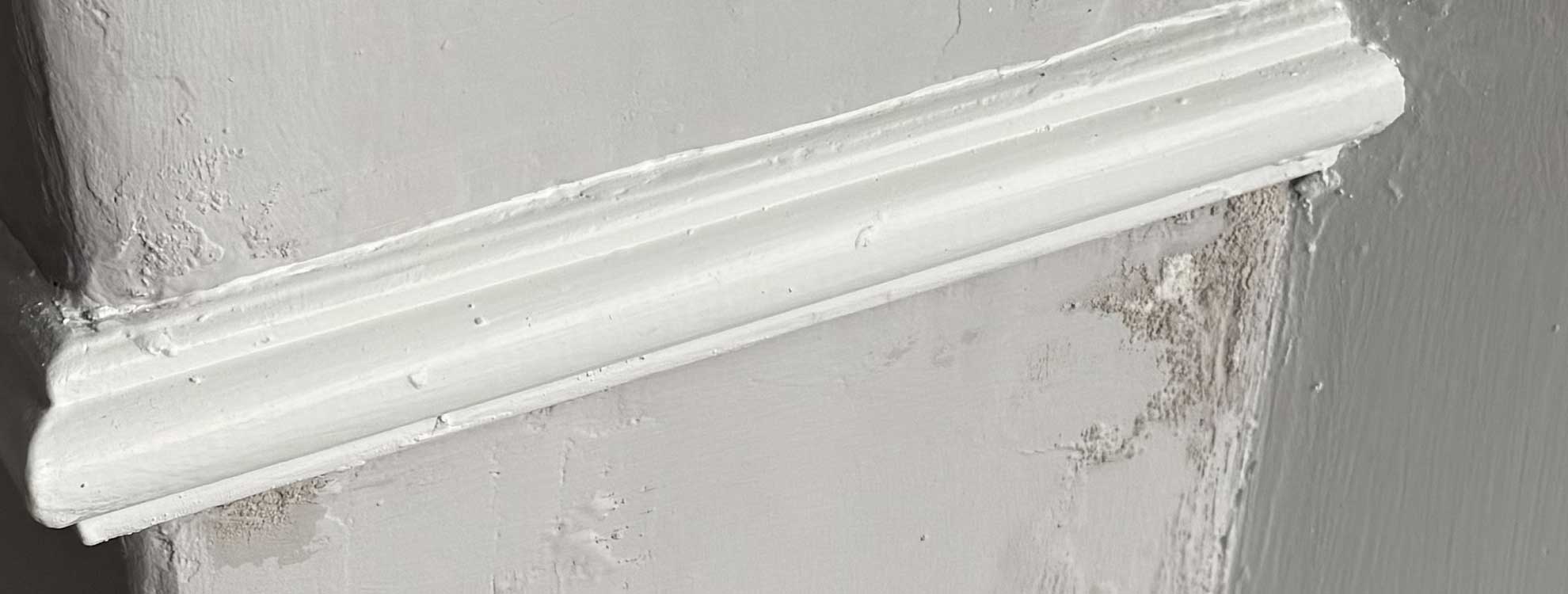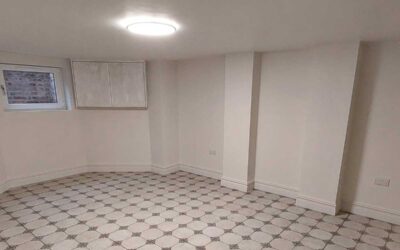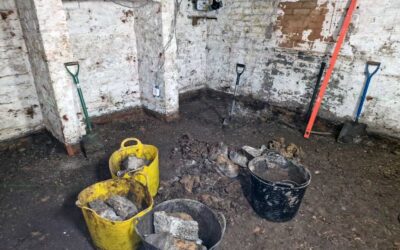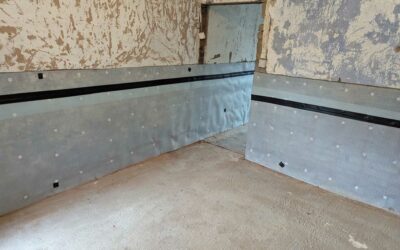Damp and Timber Survey was conducted on a Victorian mid-terrace property by our Property Care Association Approved surveyor. The survey aimed to identify any underlying issues related to dampness and timber decay that could impact the structural integrity and liability of the home.
Goals of the Survey
The primary objectives of the survey were to:
- Identify the causes and sources of damp within the property.
- Assess the condition of timber elements and identify any decay or infestations.
- Provide the client with a comprehensive report detailing findings and recommendations for repairs.
Methodology
Our surveyor employed a combination of visual inspection, moisture meter readings, and infrared thermography to carry out a thorough assessment of the property. Special attention was given to areas prone to moisture ingress due to their architectural features.
Key Findings:
1. Bay Window Roof Defects: – The survey identified significant defects in the bay window roof. Cracked and missing tiles along with improper sealing were observed.
Consequence: These issues were causing penetrating damp on the internal lounge walls, leading to visible staining and deterioration of plasterwork.

2. Timber Decay: – Adjacent to the bay window, the basement ceiling joist exhibited signs of timber decay due to excessive moisture from penetrating damp.
Consequence: If left unaddressed, this decay could significantly affect the structural integrity of the flooring above, posing safety risks to the inhabitants.
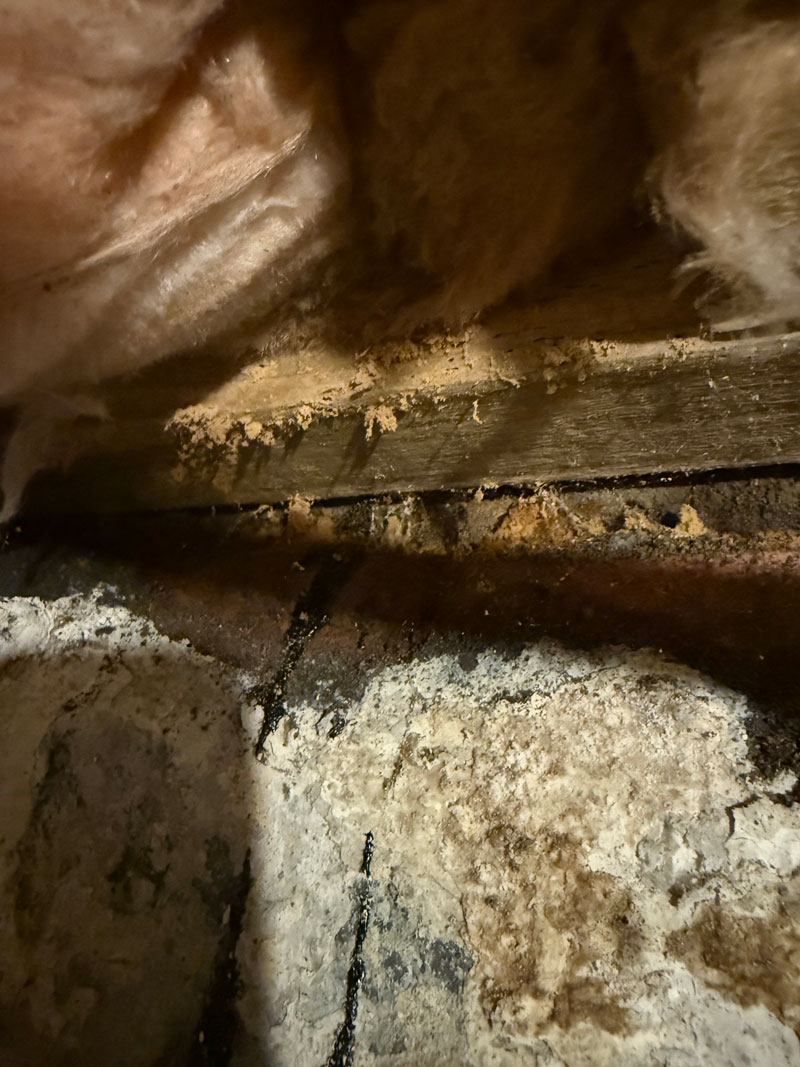
3. Loft Chimney Breast Penetrating Damp: – The survey also revealed penetrating damp on the loft chimney breast. This was attributed to poorly installed flashing at the rear of the chimney stack.
Consequence: Without rectification, water ingress from the chimney could lead to further internal damage, including mold growth and deterioration of surrounding timber and plaster.
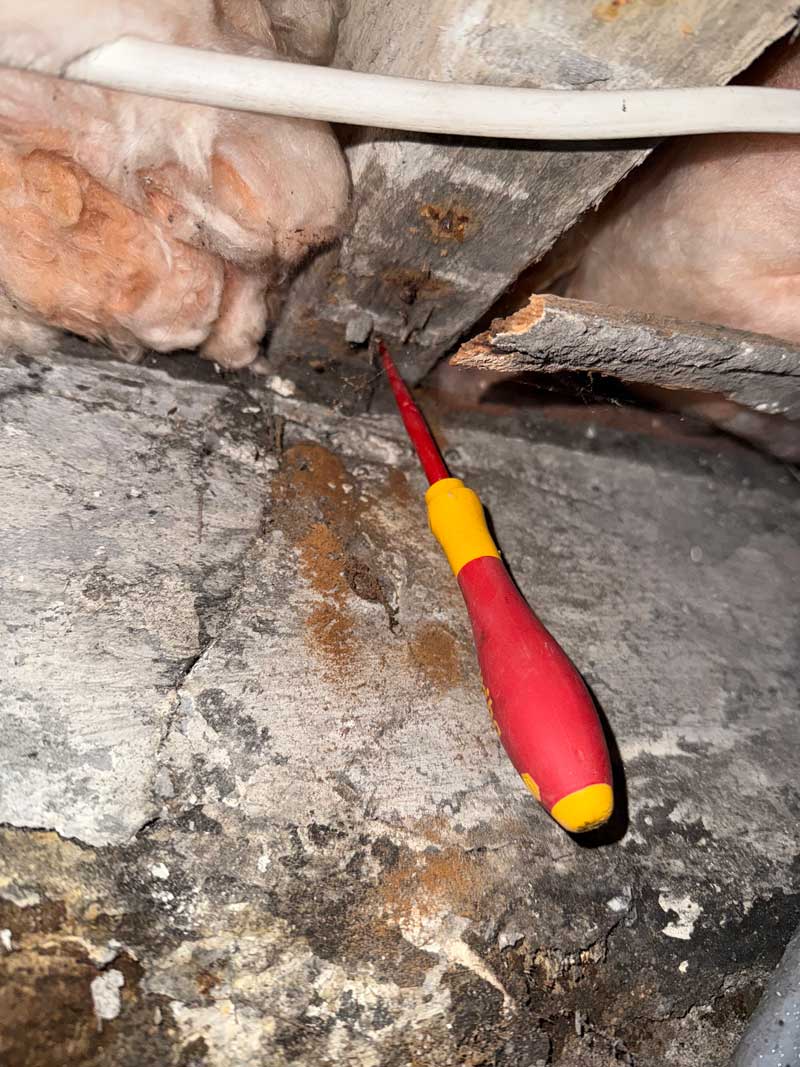
Recommendations
Following the detailed inspection, our surveyor provided the client with a comprehensive report that included: Immediate Repairs/Urgent repairs to the bay window roof and chimney flashing to mitigate further water ingress.
Timber Treatment – Recommendations for treating the affected timber joists to prevent further decay and potential pest infestations.
Long-Term Solutions – Suggestions for enhanced drainage and ventilation solutions to control moisture levels within the property.
Client Feedback
The client expressed great satisfaction with the depth and clarity of the inspection carried out by our experienced damp and timber surveyor. They appreciated the detailed report, which provided not only an understanding of the current issues but also practical solutions to rectify them.
Conclusion
This case study highlights the importance of a thorough damp and timber survey in Victorian properties where hidden problems can significantly affect the structure and comfort of living spaces.
With proactive assessment and remediation strategies, property owners can safeguard their investment and enhance their home environment.
The collaboration between the client and our surveyor demonstrates the value of professional expertise in addressing complex property issues.
By acting on the recommendations provided, the client can ensure the longevity and safety of their home while enjoying peace of mind.

